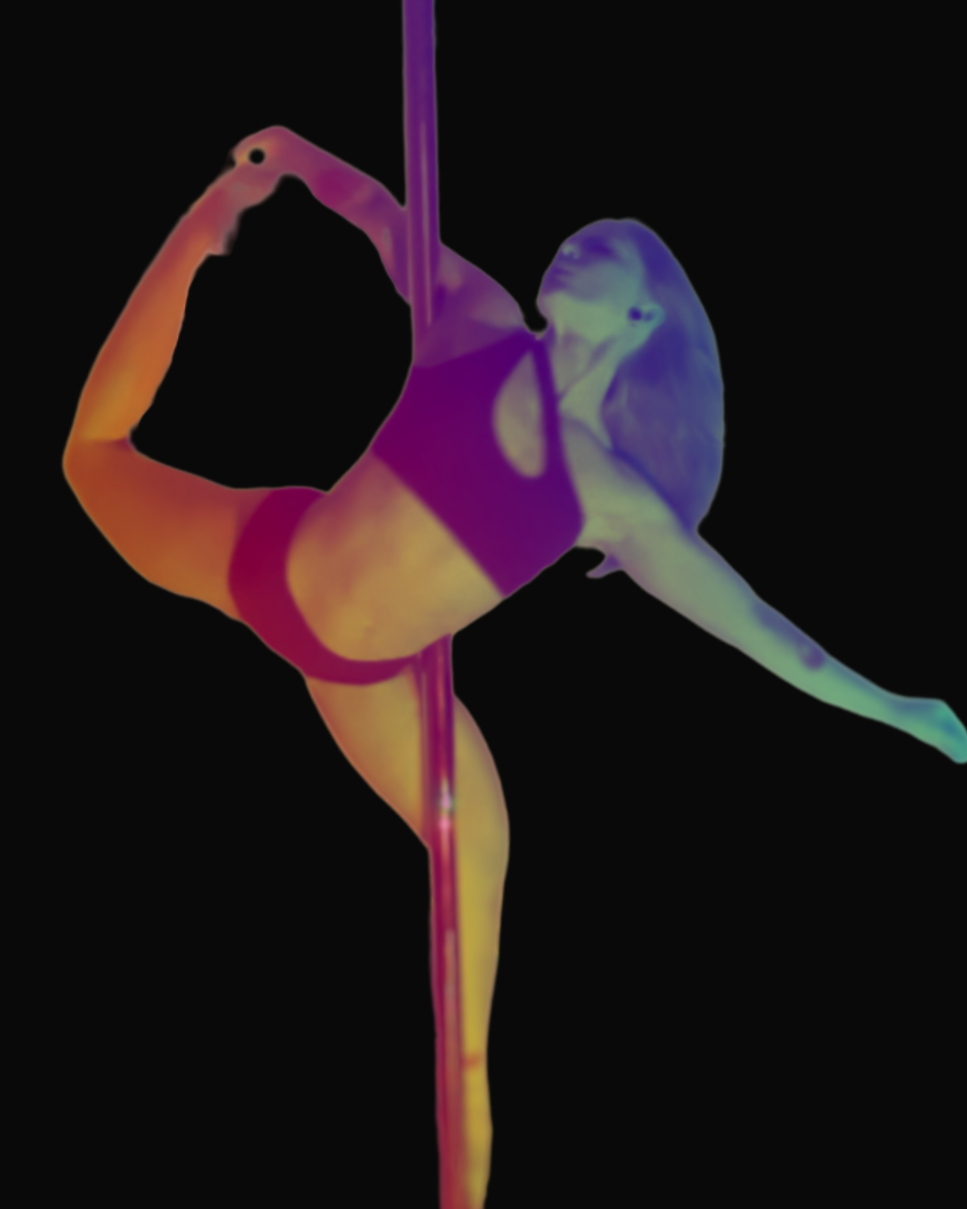Ballerina – Why Flexibility Alone Isn’t Enough
The ballerina pose isn’t just a “bendy” trick. It’s a strength move disguised as a flexibility move.
If you’ve been working your splits, backbends, and shoulder openers religiously – but still can’t hold a ballerina without collapsing, cramping, or losing control – you’re not alone. There is one key piece to the ballerina puzzle that most people miss: active strength in your end ranges.
The Flexibility Trap
Pole dancers tend to lean hard into flexibility training when chasing shapes like ballerina. And they’re not necessarily wrong for doing that, ballerina does require flexibility.
But here’s the kicker – passive flexibility (your ability to hold a shape with assistance or gravity) isn’t always enough to get you into – and stay in – a ballerina on the pole. That shape also demands strength, stability, and control in positions where your body is at a mechanical disadvantage.
This is what I mean when I say: You have to train strength through your flexible ranges.
Why Passive Flexibility Doesn’t Always Transfer to Pole
Let’s break it down:
Ballerina requires thoracic rotation, not just a bendy back.
It demands shoulder external rotation with stability, not just open shoulders.
Your hooked leg needs strong hip external rotation, or it’ll slide out of place.
Your supporting arm and core need to control your center of gravity, or the whole shape falls apart.
Passive flexibility training (like static stretching) doesn’t teach your muscles how to actively hold those positions against resistance – like gravity, spin, or momentum.
So if your ballerina is shaky, painful, or inaccessible, it’s likely not because you aren’t flexible enough. It’s because your body doesn’t yet have the strength and coordination to control that shape dynamically.
Active Flexibility: The Real MVP
Active flexibility is the range of motion you can access and control without assistance. This is where the magic happens in ballerina.
To build it, you need:
Strength at your end ranges (especially in your shoulders, spine, and hips)
Motor control to stabilize your body while it rotates, twists, and extends
Coordination between your upper and lower body
Training these skills off the pole gives your nervous system the opportunity to build strong movement patterns – so when you take them onto the pole, they’re already second nature.
What The Peak Pole Performance Survey Told Us
A few months ago, I did a small survey of 32 pole dancers to learn more about their training and nutrition:
30% reported stretching regularly but not strength training
Many of them said they felt stuck in their pole progress
Several specifically mentioned tricks like ballerina feeling impossible to hold
The takeaway? Stretching alone isn’t helping them progress. What they were missing was the type of training that builds the active control needed for advanced tricks.
How to Train for Ballerina (The Right Way)
Instead of focusing only on flexibility, your ballerina training should include:
✅ Thoracic Mobility + Rotation Strength
To rotate and stay tall through your spine – not collapse through your low back.
✅ Shoulder Stability + External Rotation Strength
To support your top arm position and control the shape safely.
✅ Hip Hinge + External Rotation Strength
To lift and lock your hook in without strain.
✅ Core Control
To stabilize your center while your limbs move independently.
This is exactly how Ballerina Unlocked is designed. It combines mobility work with progressive strength training that actually translates to your time on the pole – and yes, some stretching too.
You’ll stop guessing and start training smarter.
Signs You’re Relying Too Much on Flexibility
You can hold the ballerina shape on the floor, but not on the pole
Your shoulder or low back feels tweaky in twisted grip
You slide out of your hook or lose the line mid-spin
You’re flexible, but you still feel tight during training
If this sounds like you, don’t worry – you’re not doing anything wrong. You’re just ready to level up your training.
Ready to Build a Stronger, More Confident Ballerina?
When you stop treating ballerina like a stretch and start treating it like a skill, everything changes.
You feel more powerful.
You control your shapes.
You stop avoiding twisted grip.
You move with presence instead of panic.
If you’re ready to take your ballerina to the next level, download a copy of Ballerina Unlocked – the only all-encompassing pole ballerina cross-training program (that I know of).
You’ll train like an athlete – so you can dance like an artist.

